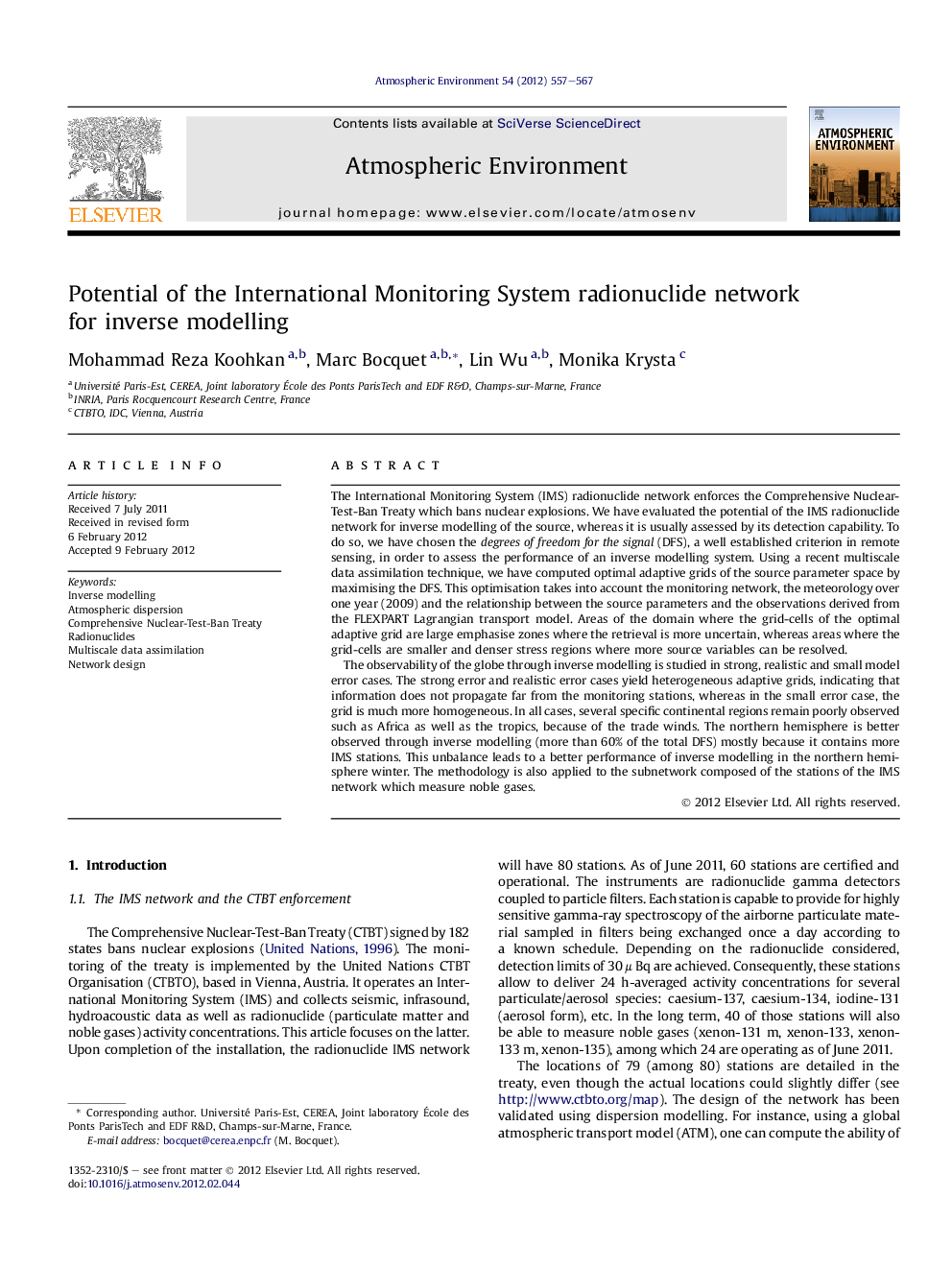| کد مقاله | کد نشریه | سال انتشار | مقاله انگلیسی | نسخه تمام متن |
|---|---|---|---|---|
| 4438829 | 1620417 | 2012 | 11 صفحه PDF | دانلود رایگان |

The International Monitoring System (IMS) radionuclide network enforces the Comprehensive Nuclear-Test-Ban Treaty which bans nuclear explosions. We have evaluated the potential of the IMS radionuclide network for inverse modelling of the source, whereas it is usually assessed by its detection capability. To do so, we have chosen the degrees of freedom for the signal (DFS), a well established criterion in remote sensing, in order to assess the performance of an inverse modelling system. Using a recent multiscale data assimilation technique, we have computed optimal adaptive grids of the source parameter space by maximising the DFS. This optimisation takes into account the monitoring network, the meteorology over one year (2009) and the relationship between the source parameters and the observations derived from the FLEXPART Lagrangian transport model. Areas of the domain where the grid-cells of the optimal adaptive grid are large emphasise zones where the retrieval is more uncertain, whereas areas where the grid-cells are smaller and denser stress regions where more source variables can be resolved.The observability of the globe through inverse modelling is studied in strong, realistic and small model error cases. The strong error and realistic error cases yield heterogeneous adaptive grids, indicating that information does not propagate far from the monitoring stations, whereas in the small error case, the grid is much more homogeneous. In all cases, several specific continental regions remain poorly observed such as Africa as well as the tropics, because of the trade winds. The northern hemisphere is better observed through inverse modelling (more than 60% of the total DFS) mostly because it contains more IMS stations. This unbalance leads to a better performance of inverse modelling in the northern hemisphere winter. The methodology is also applied to the subnetwork composed of the stations of the IMS network which measure noble gases.
► Assesses the potential of the CTBTO/IMS radionuclide network for inverse modelling.
► We determine how the information from observation is propagated in space and time.
► Poorly observed zones are identified: mainly tropical zones and Africa.
► The results could be used for potential network station reallocations.
Journal: Atmospheric Environment - Volume 54, July 2012, Pages 557–567